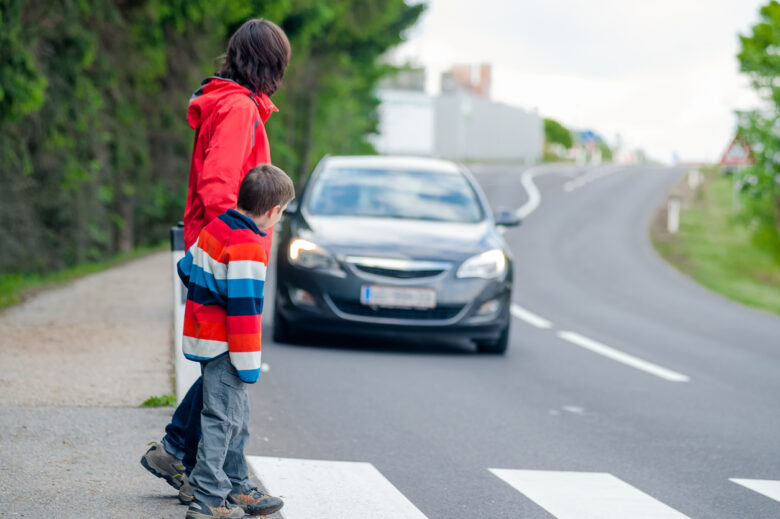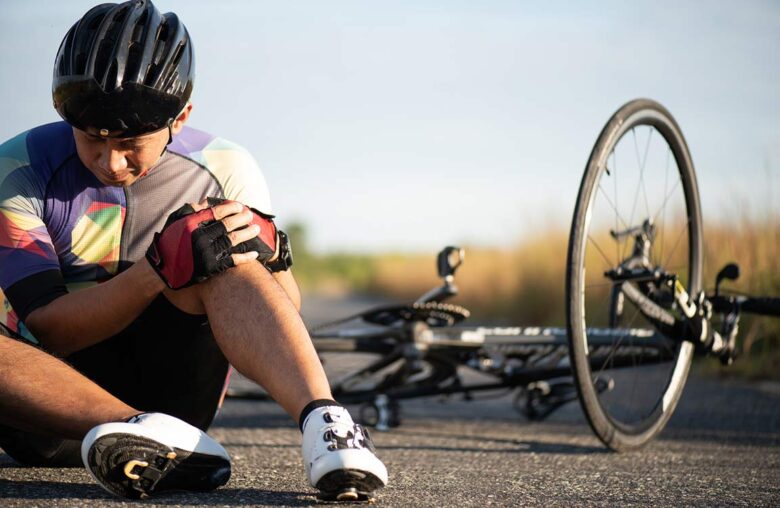Cycling can be a fun and healthy form of transportation, but cyclists need to follow the road rules and take steps to stay safe. Here are some things to know about common cycling laws and staying safe on the road:
Contents
- Rules of the Road for Cyclists
- Wearing a Helmet: The Law and Best Practices
- Using Lights and Reflective Gear for Visibility
- Following Traffic Laws and Signals
- Ride in the Correct Direction and Stay Out of Pedestrian Areas
- Yielding to Pedestrians and Other Road Users
- Communicating with Other Road Users
- Avoiding Common Cycling Accidents
- Conclusion
Rules of the Road for Cyclists
Cyclists are subject to many of the same rules as other road users and should follow these guidelines when cycling:
- Obey traffic laws and signals: Cyclists should stop at stop signs and red lights and yield to other vehicles when required.
- Use hand signals: Cyclists should use hand signals to indicate their intended movements, such as turning or changing lanes.
- Keep a safe distance from other vehicles: Cyclists should allow plenty of space between themselves and other vehicles to allow for safe passing.
- Stay in the correct lane: Cyclists should ride in the correct lane, either in the bike lane or in the same lane as other vehicles.
- Avoid riding on sidewalks: Cyclists should generally ride in the street, not on sidewalks, unless it is a designated bike path.
Wearing a Helmet: The Law and Best Practices
Wearing a helmet is one of the most important things cyclists can do to protect themselves in an accident. In some states, it is required by law for cyclists to wear Helmets, while in others, it is only required for children. Regardless of the law, it is always a good idea for cyclists to wear a helmet to reduce the risk of head injuries. When choosing a helmet, make sure it fits properly and meets safety standards.
Using Lights and Reflective Gear for Visibility

Source: mantel.com
Cyclists should take steps to increase their visibility to other road users, especially when cycling at night or in low-light conditions. This may include using lights on the bike and wearing reflective gear, such as a reflective vest or reflective tape on the bike. Cyclists should make sure to follow the local laws regarding lighting and reflectors on bikes, as these may vary by jurisdiction.
Following Traffic Laws and Signals
Following traffic laws and signals is essential to being a responsible and safe road user. Whether driving a car, riding a bike, or walking, it is important to adhere to traffic regulations to protect yourself and others.
Traffic laws are designed to help keep roads safe and orderly, including regulations on speed limits, right-of-way, and lane usage. In addition, these laws are designed to help prevent accidents and reduce the risk of injury or property damage.
Ride in the Correct Direction and Stay Out of Pedestrian Areas
It is important for cyclists to always ride in the correct direction and stay out of pedestrian areas to ensure the safety of themselves and others. Riding in the correct direction means following the rules of the road and staying in designated bike lanes or on the right side of the road. This helps prevent collisions with other vehicles and pedestrians and ensures everyone can move safely and efficiently.
Riding in pedestrian areas, such as sidewalks or crosswalks, can be extremely dangerous as pedestrians are not expecting to encounter a bike in these areas. Therefore, cyclists should avoid riding in pedestrian areas as much as possible and instead stick to designated bike lanes or roads. In the event that a cyclist needs to cross a pedestrian area, they should dismount their bike and walk it across to ensure the safety of pedestrians.
Yielding to Pedestrians and Other Road Users

Source: mantel.com
Cyclists should always yield to pedestrians, especially when turning or entering a crosswalk. Cyclists should also be aware of other road users, such as cars and motorcycles, and give them the right of way when appropriate. This can potentially minimize the risk of getting into an accident.
Communicating with Other Road Users
Here are some common ways to communicate with Other Road Users when cycling. Make sure to consider them.
- Hand signals and eye contact are crucial tools for cyclists to communicate with other road users and make themselves visible to those around them.
- By using hand signals and making eye contact with drivers, pedestrians, and other cyclists, you can clearly indicate your intentions and reduce the likelihood of accidents or misunderstandings.
- It is important for cyclists to be aware of their surroundings and pay attention to their surroundings at all times.
- This includes being cautious when passing other vehicles and looking out for pedestrians and other potential hazards.
- When making turns, cyclists must signal their intentions and ensure that it is safe to proceed.
- Additionally, cyclists should always be mindful of their speed and adjust it accordingly in different environments, such as areas with heavy pedestrian traffic or narrow roads.
Avoiding Common Cycling Accidents

Source: trainright.com
Several common types of accidents can occur when cycling, and cyclists need to be aware of these risks and take steps to avoid them. Some common cycling accidents include:
- Collisions with cars: Cyclists should be especially cautious when riding near cars and should be aware of their blind spots.
- Falls or spills: Cyclists can fall or spill due to uneven pavement, debris, or other hazards. It is important to stay alert and ride defensively to avoid these types of accidents.
- Bike malfunctions: Cyclists should regularly maintain their bikes to prevent malfunctions, such as flat tires or chain problems, that can lead to accidents.
- Cycling clothing and apparel: Make sure to put on cycling clothing and apparel.
By following the rules of the road, wearing a helmet, and taking other safety precautions, cyclists can reduce their risk of accidents and stay safe on the road.
Conclusion
In conclusion, cycling can be a fun and healthy form of transportation, but cyclists need to follow the road rules and take steps to stay safe. This includes obeying traffic laws and signals, wearing a helmet, using lights and reflective gear, and following best practices such as yielding to pedestrians and other road users. By being aware of common cycling accidents and taking precautions, cyclists can reduce their risk of accidents and enjoy a safe and enjoyable ride.
